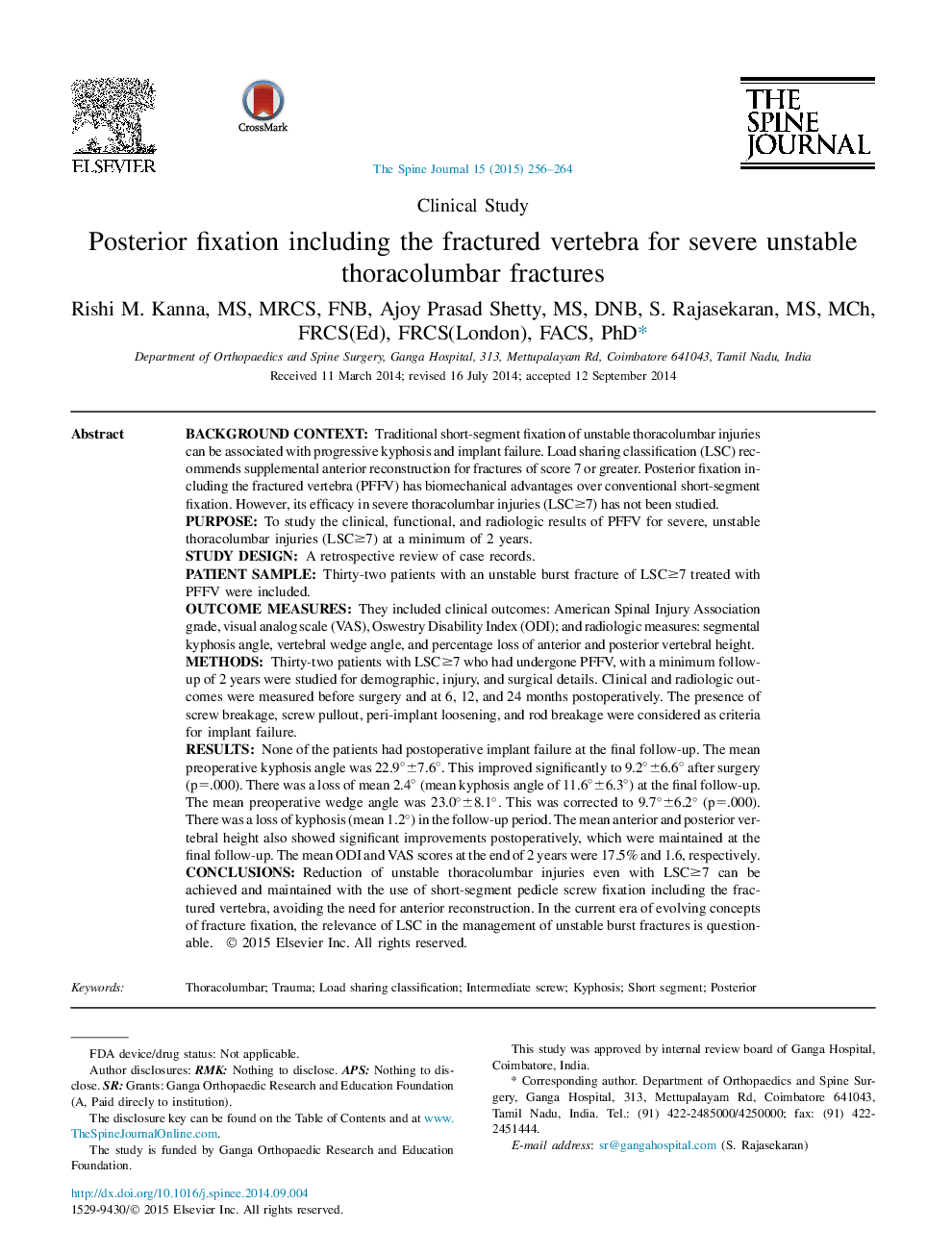| کد مقاله | کد نشریه | سال انتشار | مقاله انگلیسی | نسخه تمام متن |
|---|---|---|---|---|
| 4096540 | 1268565 | 2015 | 9 صفحه PDF | دانلود رایگان |
Background contextTraditional short-segment fixation of unstable thoracolumbar injuries can be associated with progressive kyphosis and implant failure. Load sharing classification (LSC) recommends supplemental anterior reconstruction for fractures of score 7 or greater. Posterior fixation including the fractured vertebra (PFFV) has biomechanical advantages over conventional short-segment fixation. However, its efficacy in severe thoracolumbar injuries (LSC≥7) has not been studied.PurposeTo study the clinical, functional, and radiologic results of PFFV for severe, unstable thoracolumbar injuries (LSC≥7) at a minimum of 2 years.Study designA retrospective review of case records.Patient sampleThirty-two patients with an unstable burst fracture of LSC≥7 treated with PFFV were included.Outcome measuresThey included clinical outcomes: American Spinal Injury Association grade, visual analog scale (VAS), Oswestry Disability Index (ODI); and radiologic measures: segmental kyphosis angle, vertebral wedge angle, and percentage loss of anterior and posterior vertebral height.MethodsThirty-two patients with LSC≥7 who had undergone PFFV, with a minimum follow-up of 2 years were studied for demographic, injury, and surgical details. Clinical and radiologic outcomes were measured before surgery and at 6, 12, and 24 months postoperatively. The presence of screw breakage, screw pullout, peri-implant loosening, and rod breakage were considered as criteria for implant failure.ResultsNone of the patients had postoperative implant failure at the final follow-up. The mean preoperative kyphosis angle was 22.9°±7.6°. This improved significantly to 9.2°±6.6° after surgery (p=.000). There was a loss of mean 2.4° (mean kyphosis angle of 11.6°±6.3°) at the final follow-up. The mean preoperative wedge angle was 23.0°±8.1°. This was corrected to 9.7°±6.2° (p=.000). There was a loss of kyphosis (mean 1.2°) in the follow-up period. The mean anterior and posterior vertebral height also showed significant improvements postoperatively, which were maintained at the final follow-up. The mean ODI and VAS scores at the end of 2 years were 17.5% and 1.6, respectively.ConclusionsReduction of unstable thoracolumbar injuries even with LSC≥7 can be achieved and maintained with the use of short-segment pedicle screw fixation including the fractured vertebra, avoiding the need for anterior reconstruction. In the current era of evolving concepts of fracture fixation, the relevance of LSC in the management of unstable burst fractures is questionable.
Journal: The Spine Journal - Volume 15, Issue 2, 1 February 2015, Pages 256–264
